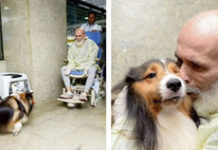EORTC/LYSA/FIL H10 study incorporated an early positron emission tomography (ePET) response–adapted treatment strategy for both ePET-negative and ePET-positive patients with stage I and II Hodgkin lymphoma. The study was designed to offer early intensification of chemotherapy in PET-positive patients and sparing radiotherapy in PET-negative patients.
The results of the preplanned 10-year follow-up analysis confirm the previous findings that PET positivity after two cycles of ABVD is associated with a worse outcome, unfortunately not corrected completely by intensification with two cycles of BEACOPPesc. The latest results are published by Prof. Massimo Federico of the University of Modena and Reggio Emilia in Modena, Italy, and colleagues on 15 November 2023 in the JCO.
The primary analysis of the ePET response–adapted treatment in localised Hodgkin lymphoma H10 study demonstrated that after a median follow-up of 4.5 years, in ePET-negative patients, the risk of relapse increased when involved-node radiotherapy was omitted and that in ePET-positive patients, switching from ABVD to BEACOPPesc significantly improved 5-year progression-free survival (PFS). In ePET-negative patients, non-inferiority of ABVD alone could not be demonstrated: the risk of relapse increased when involved-node radiotherapy was omitted, especially in patients in the favourable group.
The final results of a preplanned analysis at a 10-year follow-up show that in the favourable ePET-negative group, the 10-year PFS rates were 98.8% versus 85.4% (hazard ratio [HR] 13.2, 95% confidence interval [CI] 3.1 to 55.8; p value for non-inferiority = 0.9735; difference test p < 0.0001) in favour of ABVD plus involved-node radiotherapy. In the unfavorable ePET-negative group, the 10-year PFS rates were 91.4% and 86.5% (HR 1.52, 95% CI 0.84 to 2.75; p value for non-inferiority = 0.8577; difference test p = 0.1628). In ePET-positive patients, the difference in terms of PFS between standard ABVD and intensified BEACOPPesc was no longer statistically significant (HR 0.67, 95% CI 0.37 to 1.20; p = 0.1777).
The authors commented that their results confirm the excellent overall outcome of ePET-negative patients, either after combined modality treatment or after chemotherapy alone. However, combined modality treatment resulted in better disease control because omitting radiotherapy resulted in more early relapses, mainly affecting the originally involved areas. The low tumour burden at the time of relapse and the efficacy of the timely adoption salvage therapy allowed patients with relapse to achieve a second and durable remission in almost all cases. Instead, the achievement of a negative ePET, as assessed in the H10 study, seems not to be the ideal tool for identifying those patients who could be spared radiotherapy.
The authors concluded that the long-term analysis confirms that in ePET-negative patients, the omission of involved-node radiotherapy is associated with lower 10-year PFS. Instead, in ePET-positive patients, no significant difference between standard and experimental arms emerged although intensification with BEACOPPesc was safe, with no increase in late adverse events, specifically in second malignancies.
The findings were presented previously in part at the 17th International Conference on Malignant Lymphoma (13-17 June 2023, Lugano, Switzerland).
This long-term follow-up analysis of the H10 study was supported by EORTC, LYmphoma Study Association (France), Fondazione Italiana Linfomi, Fondation Belge contre le Cancer, Dutch Cancer Society, Institut National du Cancer (France), Assistance Publique des Hopitaux de Paris, Societe Française de Medecine Nucleaire et Imagerie Moleculaire, Associazone Angela Serra, van Vlissingen Lymfoom Fonds, and Fondation Mont-Godinne.
Reference
Federico M, Fortpied C, Stepanishyna Y, et al. Long-Term Follow-Up of the Response-Adapted Intergroup EORTC/LYSA/FIL H10 Trial for Localized Hodgkin Lymphoma. JCO; Published online 15 November 2023. DOI: 10.1200/JCO.23.01745






